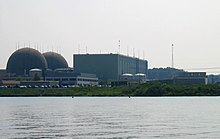 The 5.8-magnitude earthquake last month in Virginia caused about twice as much ground shaking as a nearby nuclear power plant was designed to withstand, according to a preliminary federal analysis.
The 5.8-magnitude earthquake last month in Virginia caused about twice as much ground shaking as a nearby nuclear power plant was designed to withstand, according to a preliminary federal analysis.
Parts of the North Anna Power Station in Mineral, Va., 11 miles from its epicenter, endured jolts equal to 26% of the force of gravity (0.26g) from some of the vibrations unleashed by the quake, said Scott Burnell, spokesman of the Nuclear Regulatory Commission.
An NRC document says the reactors' containment structure was built to withstand 12% of the force of gravity (0.12g.) Dominion, the plant's operator, says parts of the plant can handle up to 0.18g.
"It's the things inside the buildings that may have been shaken more than the design called for," Burnell said, adding the buildings themselves appear to have been less affected. He said the analysis is based on a seismograph reading taken about 30 miles away by the U.S. Geological Survey.
Whatever the final numbers on shaking or ground motion, the plant withstood the jolts, Burnell said, indicating there's a "great deal" of safety margin. "That margin was certainly enough for North Anna this time."
Then "maybe you shouldn't rely on the margin," said Edwin Lyman at the Union of Concerned Scientists, a non-profit critical of nuclear energy. "The jury is still out," he said, on whether the plant was adequately designed.
The two reactors at the North Anna plant, which began operation in 1978 and 1980, have remained closed since the Aug. 23 quake. They automatically shut down after losing off-site power. Backup diesel generators kept their cores cool until electricity was restored several hours later.





 Two fossil-fuel billionaires with close ties to Donald Trump bought millions of shares in the company...
Two fossil-fuel billionaires with close ties to Donald Trump bought millions of shares in the company... The Trump administration on Thursday announced new oil and gas drilling off California’s and Florida’s coasts,...
The Trump administration on Thursday announced new oil and gas drilling off California’s and Florida’s coasts,... International Atomic Energy Agency (IAEA) Director General Rafael Grossi said on Friday that an IAEA team...
International Atomic Energy Agency (IAEA) Director General Rafael Grossi said on Friday that an IAEA team... There are now three remaining deceased hostages in Gaza, following Thursday's return of the body of...
There are now three remaining deceased hostages in Gaza, following Thursday's return of the body of...






























